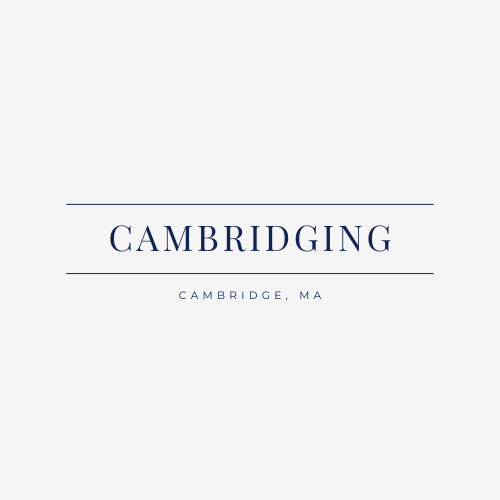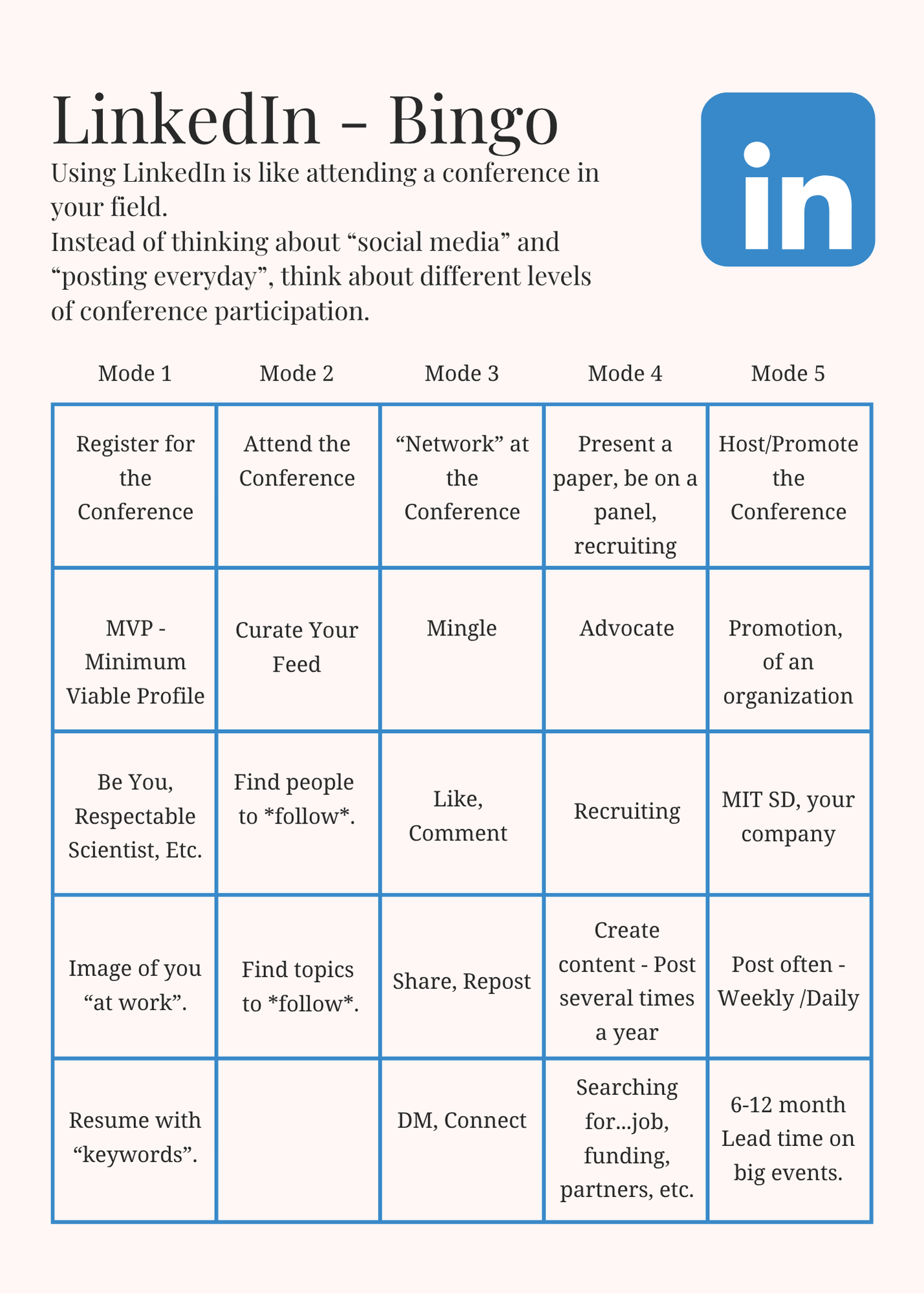International European Forum on System Dynamics and Innovation in Food Networks - October 2025
Think about LinkedIn like going to a conference in your field.
Mode 1 – Register for the Conference
The first step on LinkedIn, like the first step in being “present” in your field, is to show up. Have a LinkedIn Profile which represents who you are, what you do, and what you want to do. Having a profile, and putting a small amount of effort into it, is like registering for the conference.
You are going to sign up to be present at the conference, or “present on LinkedIn”, which means literally having a presence. Say who you are.
I am Stephanie Ford, Chief Engineer at Interactive Motion Technologies.
A blurb about what you do. We gamify extremely low impedance robotic systems to regrow neural connections in stroke patients.
Use your “keywords” to connect with the people you want to connect with.
A quick checklist:
Use a photo that represents who you are at work. Work clothes, the way you look “at work”. Suit, business casual, “in the field”.
Include information about your work and your interests. Think about sprinkling key words that you want to connect with. If you work in the Space Industry, you have a personal or professional interest in System Dynamics, and you are interested in Bio Materials, make sure those relevant words show up in your profile.
Put your work experience/education into LinkedIn. There are expert tactics and strategies, but for getting started, just have the info there.
Mode 2 – Attend the Conference
You are going to the “System Dynamics and Innovation in Food Networks” Conference. Why are you going? What are you going to do there?
You want to see research, best practices, what companies and schools are involved.
You might want to get a job or recruit.
You might be presenting a paper, speaking on a panel, or more…but let’s start with attending.
When you attend you will see when the talks, posters, events are happening and make a schedule to see what you want to see.
You will make sure to connect with some people in whatever show floor, poster session, etc is happening.
You will look to see who is going to be there.
Within LinkedIn I call this Curating Your Feed.
You are creating your very own channel of preferred content about System Dynamics, Bio Materials, Space.
You do this by finding people and organizations on LinkedIn and *follow* them. Don’t try to *connect* with people, unless you have met them in real life, or had a bit of a conversation on DMs. Otherwise, it would be like running through the conference trying to get the Nobel Laureate to be your bff.
Most people will spend most of their time on LinkedIn in Mode 2. Curating your feed and consuming content.
Mode 3 – “Network” at the Conference
As Board Members, as Networkers, as people growing a career and connections, we want to spend most of our LinkedIn time and effort in Mode 3.
There are times we will want to be Mode 4, and we might support a Mode 5 effort, but as individuals, we want to work on a strong Mode 3 game.
Mode 3 is being at the conference and interacting with people.
Go to their talks, go to their poster session, go to their “booth” on the floor.
Say hello, shake their hand, applaud their talk.
Ask questions, congratulate them, ask about their plans.
Start a conversation about your work.
On LinkedIn, this is interacting with content. It doesn’t require you to make content, just show up at the conference and interact with others.
Scroll through your feed and read the content like any other news feed. Like posts from people you know, content you are interested in, etc.
What you interact with, you will get more of.
If you are interested in System Dynamics in Food Networks, pay attention to people connected to that field. Follow them, like their content, make comments, reshare their posts, send them DMs with questions.
This level of interaction in the gold in LinkedIn.
Mode 4 – Presenter at the Conference
What would Mode 4 look like at the System Dynamics in Food Networks? If this event represents something important in your work, career, etc, then in the run up to this event, I would consider posting at once every 1-3 weeks, more often as the event gets closer.
What do you post? Most often you would be reporting content from others and adding a few words.
If you are a speaker, a panelist, a presenter, you want to be systematically posting a campaign of content, designed to interact with people, on LinkedIn for weeks/months leading up to the event.
Mode 5 – Owner of the Conference
The owner of the event, the leader, the chair, the host would be the one posting 1 time a week or more from the earliest knowledge of the event, maybe a year in advance, through the event and a few posts beyond.
At this level, none of us would be the person in charge of the content or the posts. This isn’t a level of responsibility that any of us will probably ever have alone. If you were owner a major conference, you would have a marketing team, partners, media producers would be doing these things.




